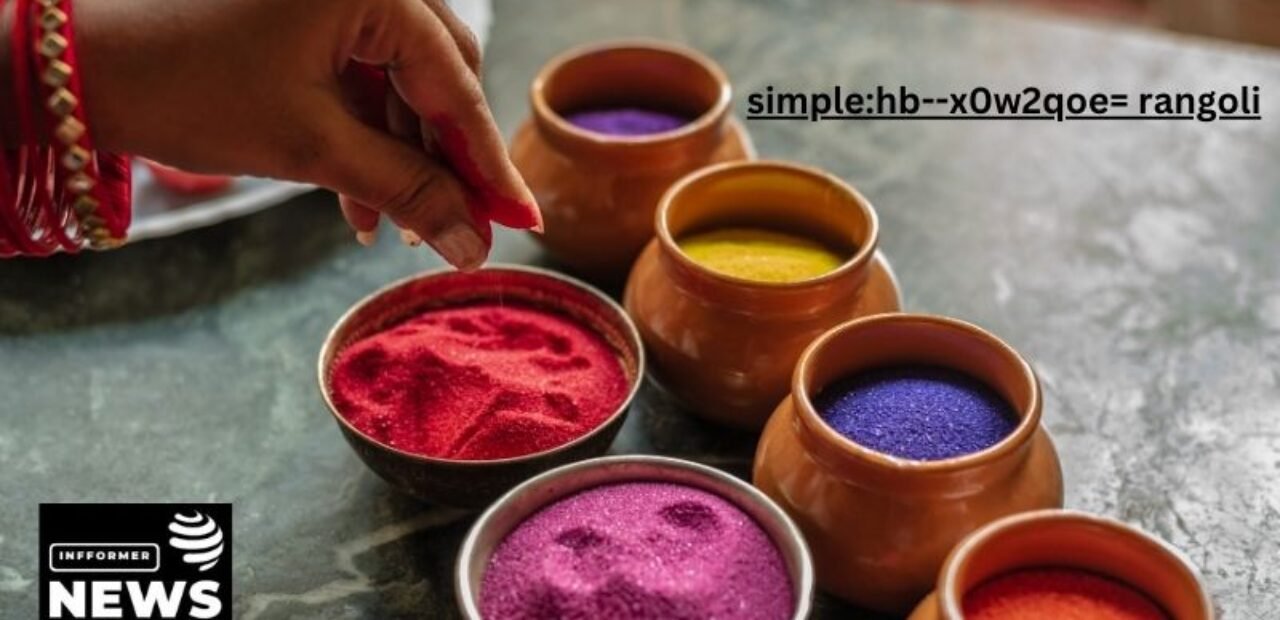The Art and Tradition of simple:hb–x0w2qoe= rangoli: A Simple yet Profound Cultural Expression
Simple:hb–x0w2qoe= rangoli, a vibrant and intricate art form, is deeply woven into the cultural fabric of India. It is more than just a decorative element; it is a symbol of joy, prosperity, and auspiciousness. The tradition of creating rangoli has been passed down through generations, evolving in style and complexity, yet maintaining its core essence. This article delves into the significance of rangoli, its origins, the various materials used, and its role in festivals and daily life. The focus keyword “simple:hb–x0w2qoe= rangoli” represents the simplicity and the profound impact of this cultural practice.
The Origins of Rangoli
The origins of rangoli are rooted in ancient Indian culture, where it was believed to be a way to welcome gods and bring good fortune. The term “rangoli” is derived from the Sanskrit word “rangavalli,” which translates to “rows of colors.” Traditionally, rangoli was created using natural materials such as rice flour, flower petals, and sand. These materials were chosen not just for their availability, but also for their symbolic meanings. For instance, rice flour was believed to invite prosperity, while flower petals represented freshness and purity.
Over time, rangoli has evolved into a more artistic and complex form, with intricate designs and a wider variety of materials. Despite this evolution, the essence of rangoli remains the same – a simple yet profound expression of cultural values and beliefs.
The Significance of Rangoli in Indian Culture
Rangoli holds a special place in Indian culture, particularly in religious and festive occasions. It is a common sight during festivals such as Diwali, Pongal, and Onam, where it is believed to bring good luck and ward off evil spirits. The act of creating rangoli is itself a form of worship, as it involves concentration, creativity, and a deep sense of devotion.
The patterns and designs used in rangoli are often symbolic, representing elements of nature, religious motifs, and geometric patterns. For example, the lotus flower is a common motif, symbolizing purity and divinity. The circular designs, known as “mandalas,” represent the cycle of life and the universe’s infinite nature.
In addition to its religious significance, rsimple:hb–x0w2qoe= rangoli is also a way to celebrate and express joy. During weddings and other celebratory events, elaborate rangoli designs are created to welcome guests and mark the auspiciousness of the occasion. This practice not only adds to the aesthetic appeal of the event but also reinforces the cultural values of hospitality and community.
Materials and Techniques Used in Rangoli
Traditionally, rangoli was made using natural materials such as rice flour, flower petals, turmeric, and vermilion. These materials were chosen for their symbolic meanings and their ability to create vibrant, colorful designs. Rice flour, for example, was used to symbolize prosperity and abundance, while turmeric was believed to ward off evil spirits.
In modern times, the materials used for rangoli have expanded to include colored powders, synthetic dyes, and even paints. These materials allow for more intricate and detailed designs, as well as a wider range of colors. However, many people still prefer to use natural materials for their rangoli, as they are eco-friendly and carry deeper cultural significance.
The techniques used in creating rangoli vary depending on the region and the complexity of the design. The most common method involves using a stencil or a freehand drawing to outline the design, which is then filled in with colors. In some regions, rangoli is created using a grid pattern, where the design is divided into small sections that are filled in one by one.
The process of creating rangoli requires patience, precision, and a steady hand. It is often a communal activity, with family members and neighbors coming together to create large, elaborate designs. This collaborative effort adds to the social and cultural significance of rangoli, reinforcing the values of community and cooperation.
simple:hb–x0w2qoe= rangoli in Modern Times
In recent years, rangoli has gained international recognition as a form of art, with exhibitions and competitions held around the world. This global interest has led to a resurgence in the popularity of rangoli, with more people learning and practicing this traditional art form.
Despite its global appeal, rangoli remains deeply rooted in Indian culture and tradition. It continues to be an integral part of religious and cultural celebrations, as well as a way to express creativity and devotion. The simplicity of rangoli, combined with its profound cultural significance, makes it a timeless and enduring tradition.
In urban areas, where space is limited, people have adapted rangoli to fit smaller spaces, such as doorsteps and balconies. This adaptability has allowed rangoli to remain relevant in modern times, while still preserving its traditional roots. Moreover, the advent of social media has provided a platform for rangoli artists to showcase their work, further popularizing this art form and inspiring others to take it up.
The Role of Rangoli in Festivals
Rangoli is an essential part of many Indian festivals, where it is used to decorate homes, temples, and public spaces. During Diwali, the festival of lights, rangoli designs are created to welcome the goddess Lakshmi, the deity of wealth and prosperity. The vibrant colors and intricate patterns are believed to attract the goddess and bring blessings to the household.
Similarly, during Pongal, a harvest festival celebrated in South India, rangoli is used to welcome the sun god and express gratitude for a bountiful harvest. The designs often feature motifs related to agriculture, such as grains, cattle, and sunrays, symbolizing the importance of nature in sustaining life.
In Kerala, during the festival of Onam, elaborate rangoli designs made of flower petals, known as “pookalam,” are created to welcome the mythical king Mahabali. These designs are a visual representation of the prosperity and abundance that the festival celebrates.
Rangoli is also a prominent feature during weddings and other important life events, where it is used to mark the auspiciousness of the occasion. The designs are often more elaborate and detailed, reflecting the significance of the event and the joy of the participants.
Conclusion
Rangoli is a beautiful and intricate art form that embodies the cultural and spiritual values of Indian society. Its simplicity is deceptive, as it requires a deep understanding of symbolism, color, and design. Despite the challenges of modern life, rangoli has managed to remain relevant and continues to be an important part of Indian culture. Whether created with natural materials or modern dyes, in rural homes or urban apartments, rangoli remains a powerful expression of creativity, devotion, and cultural identity.
The focus keyword “simple:hb–x0w2qoe= rangoli” aptly captures the essence of this art form. While rangoli may appear simple in its basic form, it is a profound and meaningful tradition that has been cherished for generations. As we continue to celebrate and preserve this tradition, we ensure that the rich cultural heritage of India is passed down to future generations, keeping the spirit of rangoli alive for years to come.
Read also: check





























































